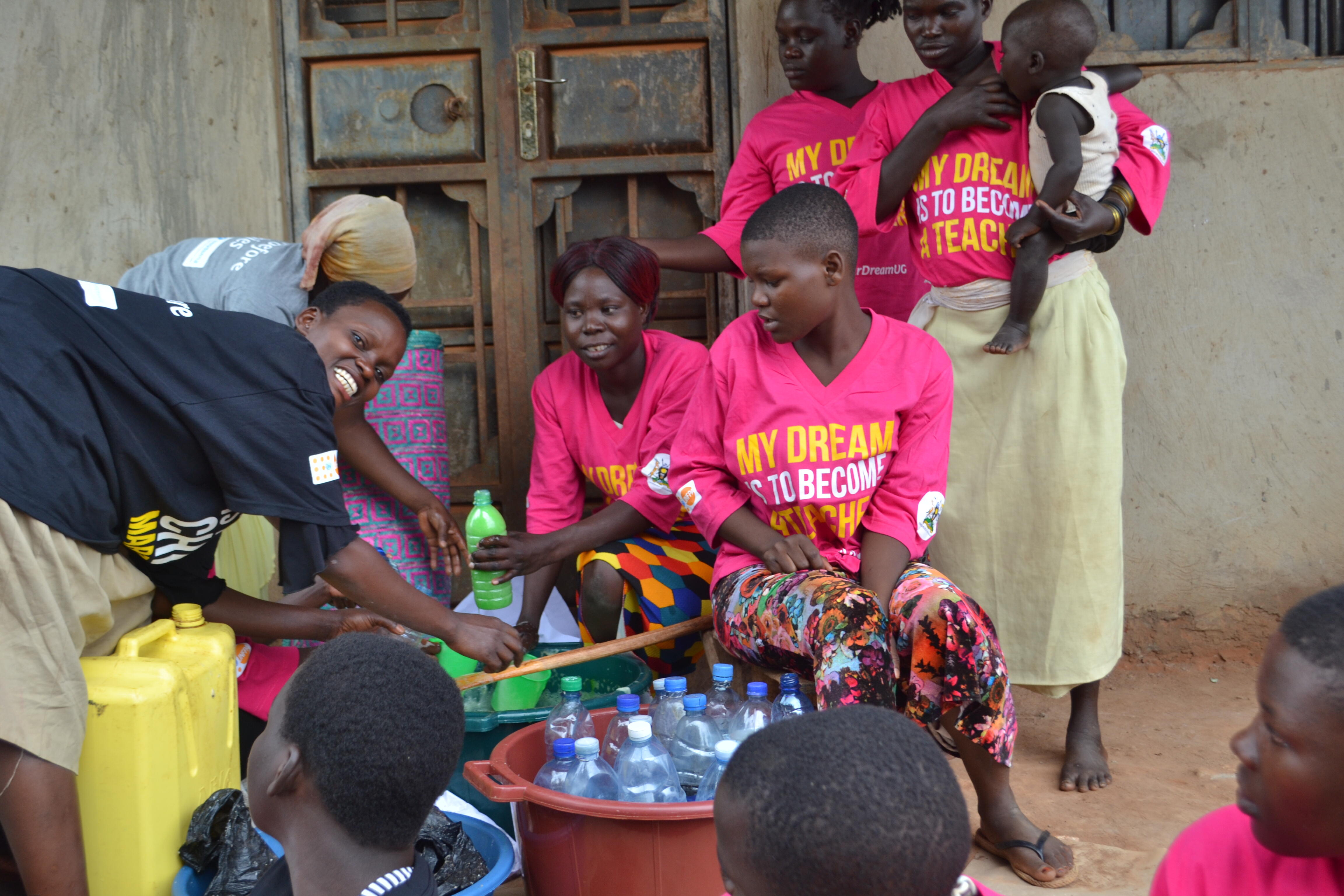Her dream is to become a powerful business woman. Not long ago, a dark shadow had been cast over her dream until she found ELA, the Empowerment and Livelihood for Adolescents clubs.
Kobusingye is an orphan who used to live with her uncle after the death of her parents. She was only 14 years when she got pregnant with her first child. At the time, she was in Primary Four at Kiryandongo Primary School in Eastern Uganda.
“A boy in my school convinced me to have sex,” narrates Kobusingye. “We did not use any protection. After a few months, people in the village started pointing fingers at me as they saw my belly growing bigger, only to realize that I was pregnant.”
According to the Uganda Demographics and Health Survey (UDHS) 2016, one in four girls has had a baby or is pregnant by age 18.
What happens when a girl gets pregnant?

PHOTO: Prossy Jonker Nakanjako/UNFPA
Statistics from the Ministry of Education and Sports in Uganda show that teenage pregnancy contributes up to 22.7 percent of school drop out for girls, denying them chances of gaining skills for better employment.
For Kobusingye, the school took immediate action when they found out that she was pregnant - they expelled her. Her uncle, who had already found out that she was pregnant took the opportunity to interrogate her to find out who was responsible.
A family meeting was convened with the boy’s parents, facilitated by the Local Council chairperson, level 1 (LC1). The LC1 chairperson requested that Kobusingye’s uncle allows her to stay at home because she was too young to be married off. The uncle refused and concluded that the girl should get married to the boy responsible for the pregnancy.
“I was told to pack my luggage and go. I had no option but to follow the boy to their home.” Kobusingye narrates.
Globally, about 14 million adolescent and teen girls are married every year, almost always forced into the arrangement by their parents, often times demanding for bride price.
In Uganda, the UDHS shows that 49 percent of women between age 20 and 24, report having been married before their 18th birthday, and 12 percent before their 15th birthday.
Finding hope in ELA
According to the UNFPA Representative, Mr. Alain Sibenaler, UNFPA is committed to supporting Government of Uganda’s efforts to prevent teenage pregnancy and under-age marriage.
With funding from development partners, such as the Korea International Cooperation Agency (KOICA), Sweden and Denmark, efforts to ensure a better life for girls in Uganda have supported high impact programmes such as the ELA model that is being implemented by BRAC Uganda - a community empowerment and education organization.
The ELA model is an integrated approach to healthcare, encompassing reproductive health for boys and girls of 10 – 19 years with livelihoods and economic empowerment sessions.
The ELA clubs serve as a safe space for adolescent girls, with a particular focus on girls who have dropped out of school or might otherwise be at risk of early pregnancy. The focus is on preventing and responding to effects of teenage pregnancy, increased use of contraceptives, reduction in sexually transmitted infections, and menstrual hygiene.

When BRAC Uganda staff visited Kinawanswa village in Iganga district in Eastern Uganda to make an assessment about child marriage, they met the LC1 chairperson. On explaining to him the objectives of the ELA programme, the LC1 chairperson decided to convene a village meeting. It was at that meeting that Kobusingye got enrolled in ELA club.
Kobusingye says that she got to learn a lot of things that she did not know such as safe sex, family planning, the rightful age of marriage and how to be assertive.
“Previously, I was shy and ignorant about all these things, with the life-skills training at the club, now I can stand and say ‘NO.’ Even if a man comes with convincing words; I will never get pregnant again!” Kobusingye says.
Since 2016 when UNFPA started supporting the ELA model in Uganda, at total of 38,940 girls have graduated. Out of these 73 percent own a business or are engaged in a gainful employment.
The tide is now turning for Kobusingye. Through financial literacy and apprenticeship training from ELA, she got skills to make liquid soap. She now owns a small stall in Kinawanswa village where she sells the liquid soap, tomatoes and silver fish.
“I save 2,000 or 3,000 shillings (about US $ 0.78) a day depending on the turn up of customers,” Kobusingye says with a smile full of hope. “I am now self-reliant.”


